
Rodgers Instruments Corporation is an American manufacturer of classical and church organs. Rodgers was incorporated May 1, 1958 in Beaverton, Oregon by founders, Rodgers W. Jenkins and Fred Tinker, employees of Tektronix, Inc., of Portland, Oregon, and members of a Tektronix team developing transistor-based oscillator circuits. Rodgers was the second manufacturer of solid state oscillator-based organs, completing their first instrument in 1958. Other Rodgers innovations in the electronic organ industry include solid-state organ amplifiers (1962), single-contact diode keying (1961), reed switch pedal keying for pedalboards (1961), programmable computer memory pistons (1966), and the first MIDI-supported church organs (1986).
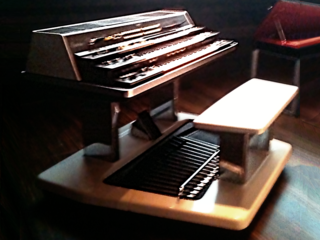
An electric organ, also known as electronic organ, is an electronic keyboard instrument which was derived from the harmonium, pipe organ and theatre organ. Originally designed to imitate their sound, or orchestral sounds, it has since developed into several types of instruments:

A theatre organ is a type of pipe organ developed to accompany silent films, from the 1900s to the 1920s.
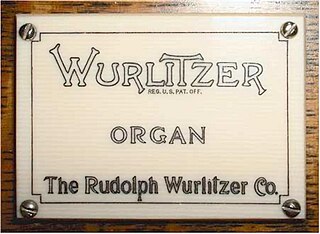
The Rudolph Wurlitzer Company, usually referred to as simply Wurlitzer, is an American company started in Cincinnati in 1853 by German immigrant (Franz) Rudolph Wurlitzer. The company initially imported stringed, woodwind and brass instruments from Germany for resale in the United States. Wurlitzer enjoyed initial success, largely due to defense contracts to provide musical instruments to the U.S. military. In 1880, the company began manufacturing pianos and eventually relocated to North Tonawanda, New York. It quickly expanded to make band organs, orchestrions, player pianos and pipe or theatre organs popular in theatres during the days of silent movies.
Mathias Peter Møller, commonly known as M.P. Möller or Moeller, was a prolific pipe-organ builder and businessman. A native of the Danish island of Bornholm, he emigrated to the United States in 1872 and founded the M.P. Moller Pipe Organ Company in Greencastle, Pennsylvania, in 1875. The city of Hagerstown, Maryland, took notice of Möller's early successes and induced him to move his business there in 1881 to help make it a viable business center in Western Maryland. The company remained in business in Hagerstown. until 1992, with hundreds of employees at its peak and a lifetime production of over 12,000 instruments.
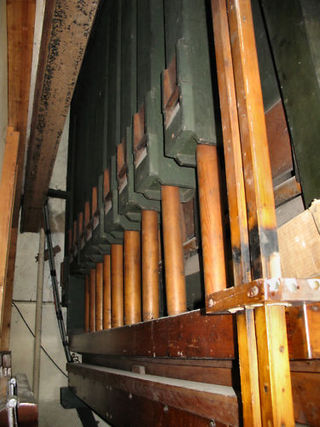
Robert Hope-Jones was an English musician who is considered to be the inventor of the theatre organ in the early 20th century. He thought that a pipe organ should be able to imitate the instruments of an orchestra, and that the console should be detachable from the organ.

Austin Organs, Inc., is a manufacturer of pipe organs based in Hartford, Connecticut. The company is one of the oldest continuously-operating organ manufacturers in the United States. The first instruments were built in 1893 with the Austin Patent Airchest, and many remain in fine playing condition to this day.
George Wright was an American musician, possibly the most famous virtuoso of the theatre organ of the modern era.
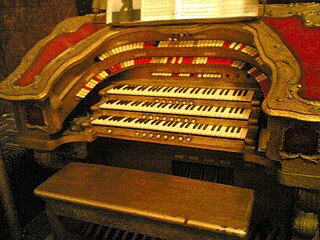
The Bartola Musical Instrument Company of Oshkosh, Wisconsin, USA, was a producer of theater pipe organs during the age of silent movies.

The Paramount Theatre is a concert venue in Denver, Colorado, located on Glenarm Place, near Denver's famous 16th Street Mall. The venue has a seating capacity of 1,870 but is a popular destination for large acts looking for a smaller concert setting. With spelling as Paramount Theater, the building was listed on the National Register of Historic Places in 1980.

The Robert Morton Organ Company was an American producer of theater pipe organs and church organs, located in Van Nuys, California. Robert Morton was the number two volume producer of theatre organs, building approximately half as many organs as the industry leader Wurlitzer. The name Robert Morton was derived not from any person in the company, but rather from the name of company president Harold J. Werner's son, Robert Morton Werner.
Hillgreen-Lane was a builder of church and theater pipe organs. The company's shop was in Alliance, Ohio, and very close to the shops of the pipe maker A.R. Schopp's Sons, often doing business with them.
Walt Strony is an American recording, consulting and performing organist and organ teacher, both on the theatre organ and traditional pipe organ, ranging from pizza parlors to churches and theatres to symphony orchestras.

The American Theatre Organ Society (ATOS) is an American non-profit organization, dedicated to preserving and promoting the theatre pipe organ and its musical art form.
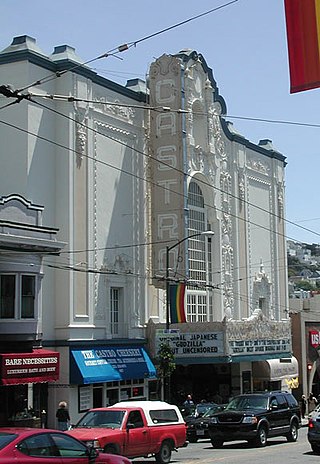
The Castro Organ Devotees Association (CODA) is an American nonprofit organization dedicated to preserving and enhancing the tradition of live organ music in San Francisco's Castro Theatre. The theater is a popular San Francisco movie palace, built in the 1920s, which gained Historic Landmark status in 1976. The original Robert Morton organ was removed in the 1950s. The present organ, widely regarded as one of the finest theatre organs assembled, was assembled in the late 1970s using components from other organs, including its console, which was originally built in 1925 for the State Theatre in Detroit, Michigan to accompany silent pictures. The current console and organ were built by the Taylor family starting in 1979, and it has been owned and maintained by them since, but in 2014 they moved taking the console and one fourth of the pipework.
The Organ Grinder Restaurant was a Portland, Oregon pizzeria in operation from 1973 to 1996. At one point it housed the largest theater pipe organ of its type in the world.

David Howard Hegarty is an American organist and composer. He has served as organist at the Castro Theatre in San Francisco since 1978.
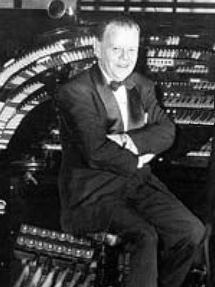
Richard William "Dick" Leibert was an American musician who was the chief organist at New York City's Radio City Music Hall between 1932 and 1971. He also had a radio program of organ music on the NBC Radio Network in the 1930s and 1940s, along with making phonograph recordings on the RCA Victor and Westminster Records labels.
The Positive Organ Company was an English pipe organ maker, established in London in 1898 by Thomas Casson, although with some earlier antecedents. The firm was best known for small, one-manual organs, which were able to be moved about. It ceased trading in 1941, but the name was revived in 2020 with a new, unrelated organ builder.













